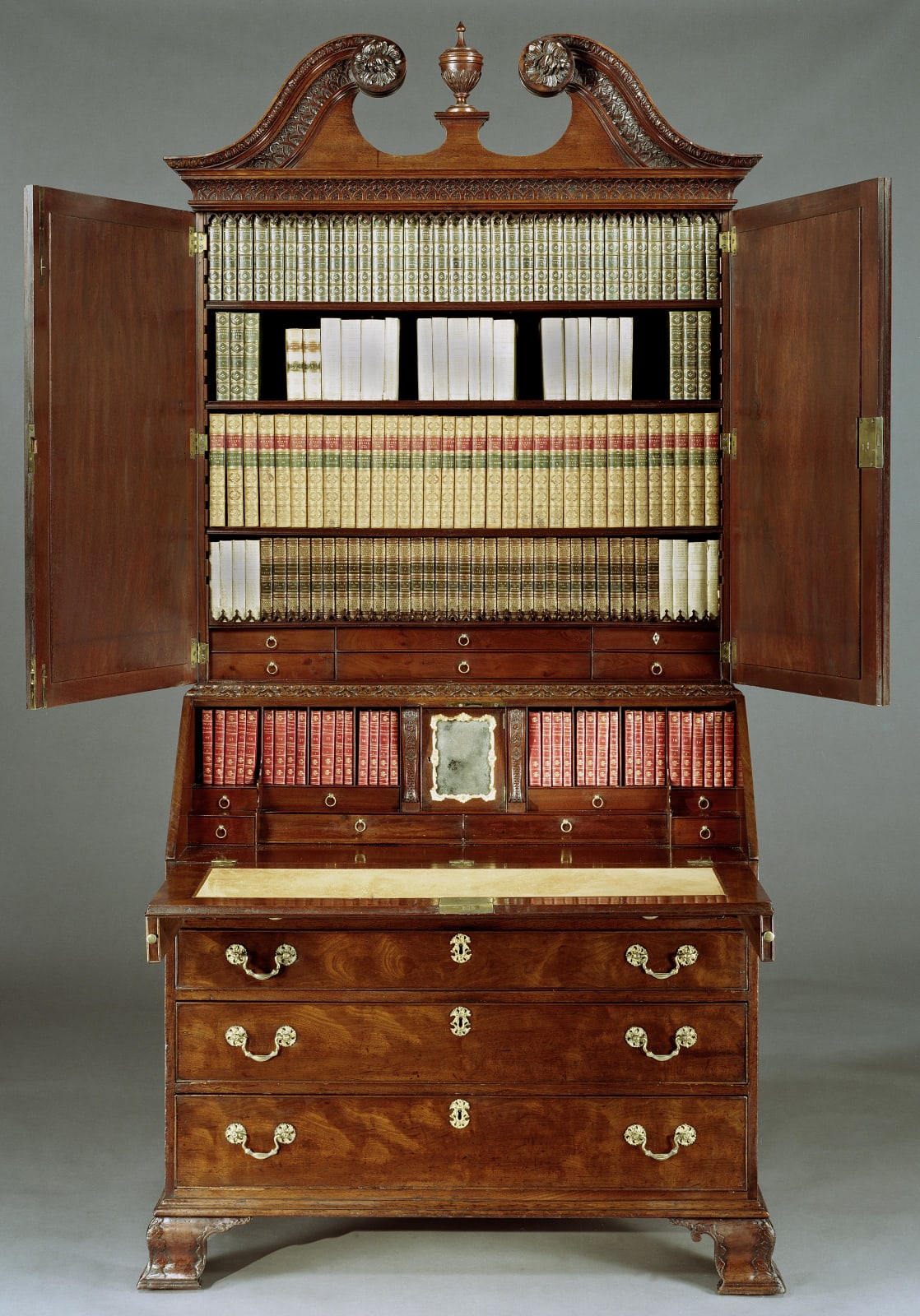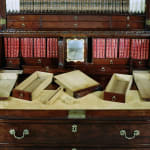THE DAVID STYLE BUREAU CABINET, English, circa 1770
Width: 3 ft 10 ¼ in; 117.5 cm
Depth: 1 ft 11 ½ in; 60 cm
Further images
A George III parcel gilt mahogany bureau cabinet attributed to George Speer.
Note: The cabinet retains its original mercury silvered mirror plates, the original gilding and its original ornate brass handles.
George Speer is one of the lesser known 18th century London cabinet-makers. His name is not generally associated with 18th century furniture designs, and although a design for a harlequin table published in The Cabinet Makers’ Book of Prices of 1788 can be ascribed to him, his style was perhaps not innovative enough to get noticed. The quality of his furniture, however, very probably rivalled that of the top London makers of his time.
Neoclassical furniture was already in fashion when this cabinet was made, and its design would have been some twenty to thirty years behind the latest trends, but today this change in fashion from the robust baroque style to the neoclassical is of academic importance only. Whereas the beautiful figured mahogany used for veneering the front of the cabinet is entirely typical for the last quarter of the 18th century when the cabinet was made (with much plainer woods used for earlier work), the carved ogee bracket feet, Gothic blind fretting and flower carved mouldings are design features characteristic of the 1740s and 1750s, such as one would expect to see in the work of cabinet-makers like Giles Grendey and William Hallett. Hallett had, through his grandson (also called William), a tenuous connection to George Speer. The grandson was not a cabinet-maker but a gentleman who was affluent enough to commission Thomas Gainsborough to paint him and his wife: the resulting painting, The Morning Walk, is now in the National Gallery in London. It was this William Hallett who witnessed George Speer’s will.
Speer, like Hallett senior, had in the course of a successful working career amassed a small fortune which he invested in a number of rental properties in and beyond the City of London. Unlike Hallett, though, Speer was later almost forgotten, despite his business success, and his name only resurfaced after the discovery of a folio containing some of his designs, along with a handful of labelled pieces that have been recorded over the years.
It is interesting to note that R. W. Symonds, despite not knowing about the maker, endorsed many pieces that could today be ascribed to the Speer workshop. There are no fewer than ten pieces in the celebrated Percival D. Griffiths collection that relate to Speer’s designs, and all are of course of the high quality that such a collection required.
Provenance
Charles Lumb & Sons Ltd., Harrogate, Yorkshire, England;
David Style, Wateringbury Place, Kent, England, until sold;
Christie’s, 31 May 1978, lot 130;
Mallett & Son Ltd., London, England;
Private collection, USA.
Literature
Anthony Coleridge, ‘George Speer’, Apollo, October 1970, p. 281, pl. 12.
Geoffrey Beard and Christopher Gilbert, The Dictionary of English Furniture Makers 1660–1840, 1986, p. 842.
Christopher Gilbert, A Pictorial Dictionary of Marked London Furniture 1700–1840, 1996, pp. 434–5.
Illustrated:
Christie’s, ‘Wateringbury Place’, Part I, sale catalogue, 31 May 1978, pp. 66–7, lot 130; illustrated in colour.








